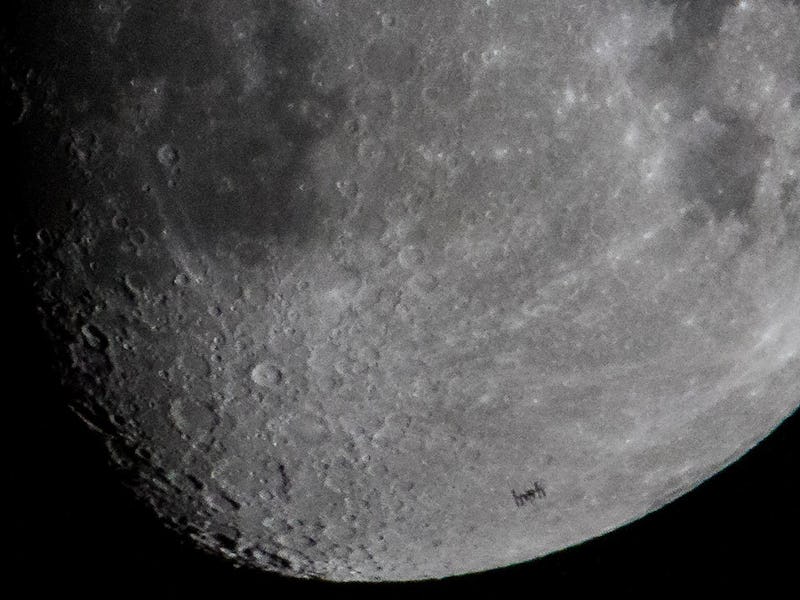NASA's Moon water discovery could recreate water's journey through the Solar System
Tracing the history of the Moon's water may help us understand our own history.

On Monday, NASA confirmed that water not only exists on the Moon, but that it is much more abundant across the lunar surface than scientists first thought.
The discovery has major implications for space agencies' future plans to build a base on the Moon. But it can also help scientists put together the story of how water made its way to Earth. Ultimately, their findings could pave the way to understanding the critical role water plays within the inner Solar System.
For years, scientists knew that some form of hydrogen existed on the sunlit regions of the Moon. But they were not able to tell whether it was molecular water, or hydroxyls.
The new findings were reported in a pair of studies published Monday in the journal Nature Astronomy, detailing the "unambiguous" detection of molecular water and small, icy water traps spread out across the lunar surface, including the sunlit regions.
The water molecules were detected in the Clavius Crater, located in the Moon's southern hemisphere. This crater is one of the largest that can be seen from Earth. The discovery was made using NASA’s Stratospheric Observatory for Infrared Astronomy (SOFIA), a flying telescope mounted on a Boeing 747 plane.
Despite the previous evidence, Casey Honniball, a postdoctoral fellow at NASA's Goddard Space Flight Center in Greenbelt, Maryland, was not confident that water existed on the Moon.
"We were surprised to find water at all," Honniball tells Inverse.
The new discovery challenges our understanding of how water forms and persists in a harsh environment, Honniball says. Unlike Earth, the Moon lacks a thick atmosphere, which means it is blasted with solar radiation from the Sun.
“Without a thick atmosphere, water on the sunlit lunar surface should just be lost to space,” Honniball says. “Yet somehow we’re seeing it. Something is generating the water, and something must be trapping it there.”
Where the water comes from — There are two theories for how the water on the Moon got there in the first place.
One is that micrometeorites could carry small amounts of water to the lunar surface as they crash down. The other is that the Sun's solar wind, a stream of charged particles emitted by the Sun, could deliver hydrogen to the Moon's surface. Oxygen-bearing minerals found in the lunar soil might react with that hydrogen to generate water.
Neither of these theories answers how the water manages to stay on the Moon, though. The scientists behind the new research believe it may be trapped in small, beadlike structures in the lunar soil. These could form in the micrometeorite impacts. Alternatively, the water could be tucked in as pockets of ice between grains of soil that shelter it from the sunlight.
"There's a lot more questions raised by this recent detection" than are answered, Honniball says.
Water is one of the key ingredients for life on Earth, and scientists tend to cite it as a necessary component for life to flourish on other cosmic bodies, too. Understanding how the water got on the Moon and how it survives there will help home in on where life might flourish elsewhere in the Solar System.
"The bigger picture scientifically, we want to know where the water on the Moon comes from and that helps us understand where the water on Earth comes from," Paul Hayne, a researcher at the Astrophysical & Planetary Sciences Department at the University of Colorado and lead author of one of the new studies, tells Inverse.
Scientists are not sure how the Earth got its oceans and seas. It is an open question as to whether water formed on the surface of our planet itself, or if it was transported by way of meteorites that crashed into Earth billions of years ago.
To help solve this mystery, the researchers hope to one day get a sample of the lunar water and compare it to the water found on Earth. By measuring the isotopic ratio of the water on the Moon, they can narrow down whether the water came from asteroids or by way of solar wind, Hayne says.
If scientists can recreate the journey of water through the Solar System, it may in turn offer clues to our own origin story. "Water is just one small part of what makes life," Honniball says. A small part, yes, but essential.